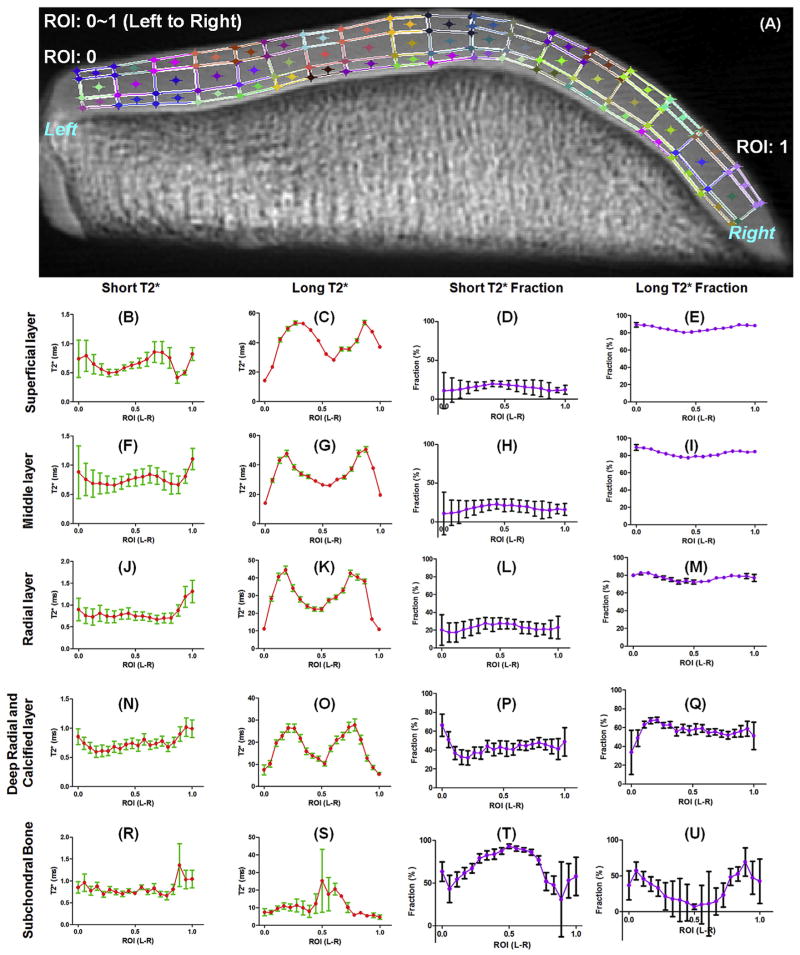Fig. 4.
Magic angle study of a patella sample which was divided into different layers across the cartilage depth and different regions from left to right (A). UTE T2* bi-component analysis was performed to show the orientation dependence of short T2*, long T2*, short T2* fraction and long T2* fraction for the superficial layer (B–E), middle layer (F–I), radial layer (J–M), deep radial and calcified layer (N–Q) and subchondral bone (R–U), respectively. Significant magic angle effect was observed for long T2* values. The short and long T2* fractions are relatively insensitive to the magic angle effect. Fitting errors in bi-component T2* analysis were displayed.

